Listen to the audio version of this story. For more, subscribe to our podcast.
When Al Capone was delivering bootlegged liquor to his speakeasies, using wooden boxes stenciled with the names of his legitimate businesses, he bought crates made by Ideal Box Co. in Chicago. Today, Ideal has reinvented itself to enable a more benign kind of vice: impulse buys at the grocery store. Its brightly colored bins and shelves, beckoning from the ends of aisles in supermarkets and big-box stores, might be just part of the scenery for shoppers, but they represent big business for the brands that pay to place them there—and for Scott and Yale Eisen, who run the corrugated box company that their great-grandfather started in 1924.
The Eisens shared a bedroom for about 10 years of their childhood. Yale, the younger brother by 15 months, was the tidier one, and when he was around seven years old, he taped a line down the middle of the room to separate his half from Scott’s. At Ideal’s headquarters, the Eisen brothers share adjacent offices.
We love being a corrugated manufacturer—we’re not defensive about that. … But a me-too corrugated company we just never want to be.
“At this point, that line is a lot murkier,” Scott says. “He definitely has his area and I respect the way he does it, and I like to think that I have my area and he respects the way I do it. But I think we still sort of share that room.”
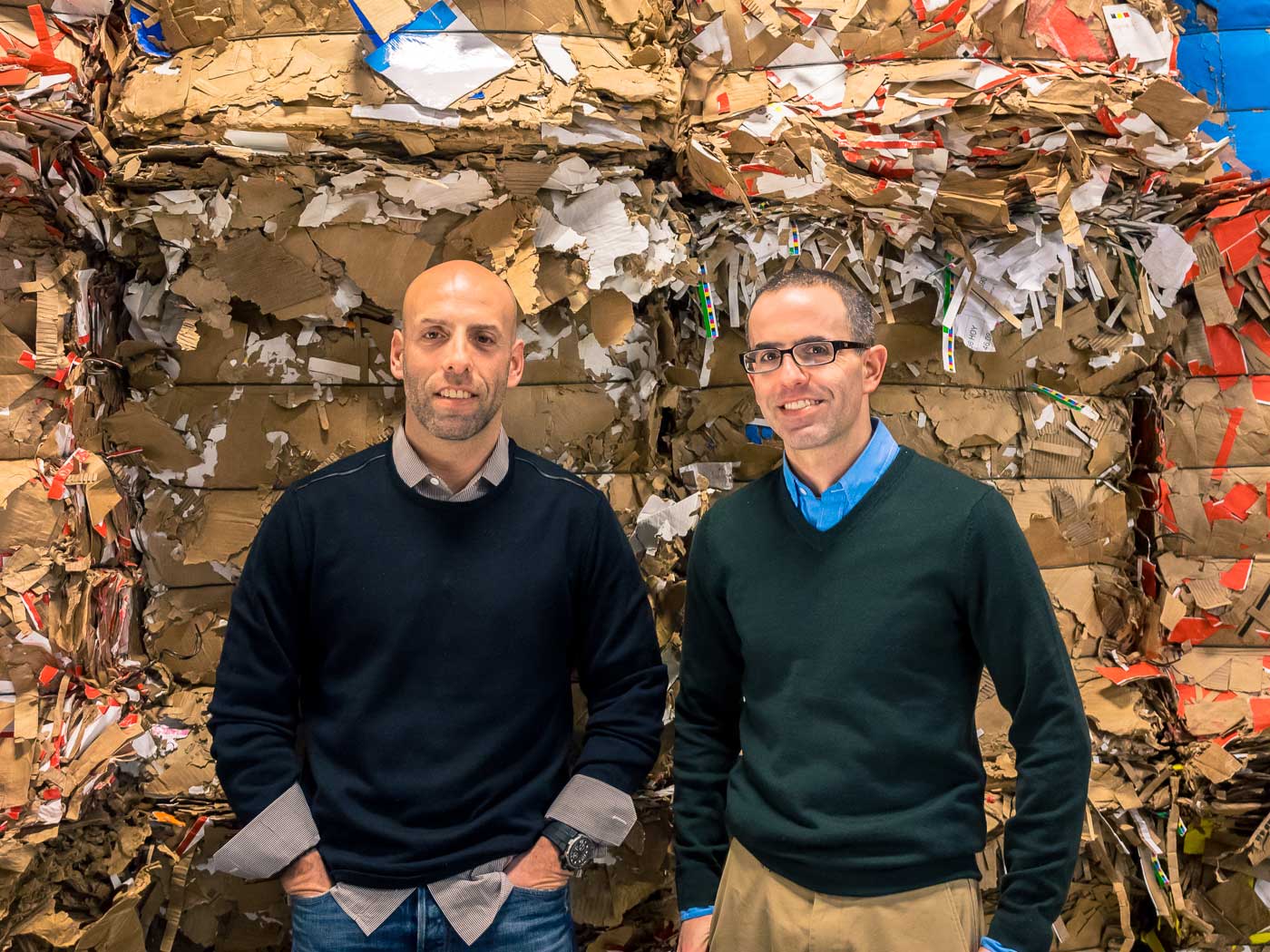
And the brothers’ contrasting personalities—one outgoing, one more reserved—seem especially suited for a company built around equal parts flash and reliability. Ideal, which used to pump out nothing but brown boxes, has transformed itself into a specialist in what the retail industry calls point-of-purchase displays: corrugated stands brimming with snacks, seasonal merchandise or the newest DVD release. The Eisens believe the displays will help them combat the shrinking margins and slowing growth they see in their traditional, commoditized brown boxes. Ideal not only manufactures the point-of-purchase displays, but it also designs them from scratch and pitches new ideas to consumer packaged-goods companies. It has an in-house creative agency of graphic designers, structural engineers and retail experts working just steps from the operators who run Ideal’s enormous corrugating machines.
“We love being a corrugated manufacturer—we’re not defensive about that,” Scott says. “We love the business. There (are) really good people in this business; our competitors are smart. But a me-too corrugated company we just never want to be.”
Corrugated boxes still account for about 40 percent of Ideal’s volume. But the company is focusing its investment on the display business. It has put $15 million into new equipment like a five-color die cutter; hired additional staff; and even embedded a team of employees at ConAgra Foods, a major client whose brands include Snack Pack pudding and Chef Boyardee. That bright display of Orville Redenbacher popcorn or that stand of PAM coconut oil spray at the supermarket? It was probably designed and manufactured at Ideal’s headquarters, just a few miles from Chicago’s Midway Airport.

Corrugated displays aren’t just about impulse buys, although the small stands of 5-Hour Energy shots next to the drugstore cash register certainly are. Consumer packaged-goods companies hope point-of-purchase displays will snap shoppers out of autopilot, reminding them of a product that might not be on their grocery list, drawing them into an aisle they weren’t going to visit or persuading them to buy more of something they already like.
The idea has been around for about a half-century, says Rich Scamehorn, chief research officer and co-founder of InContext Solutions, a market-research company that makes virtual shopping simulations to track, among other things, how consumers’ eyes move as they scan shelves. The earliest point-of-purchase displays were simple pallets of products placed in the middle of an aisle or somewhere noticeable, a technique still used for items like soda and snacks. Seasonal promotions accelerated growth in the display business; the rhythm of Ideal’s year is set by events like the holidays, NASCAR, the Super Bowl, summer grilling and Halloween.
“The question is, can you get them to buy one more time each year?” says Scamehorn, who used to work at General Mills. “If you can get all of your buyers to do that, you grow your sales pretty substantially.”
During a recent trip to Ideal’s offices, Scott Eisen weaved through a collection of finished displays, pointing out the different kinds. The inelegantly named “dump bin,” a waist-high receptacle filled with Tootsie Rolls and lollipops, fell on the simple end of the spectrum, but many of the designs were elaborate. A freestanding, three-dimensional palm tree— a “standee”— was meant to stand among cases of Mike’s Hard Margarita. A collection of Super Bowl-themed displays for Nabisco included a logo-bedecked cardboard arch that would hang over the entrance to a supermarket aisle and a tall floor display with goal posts and small flashing lights.
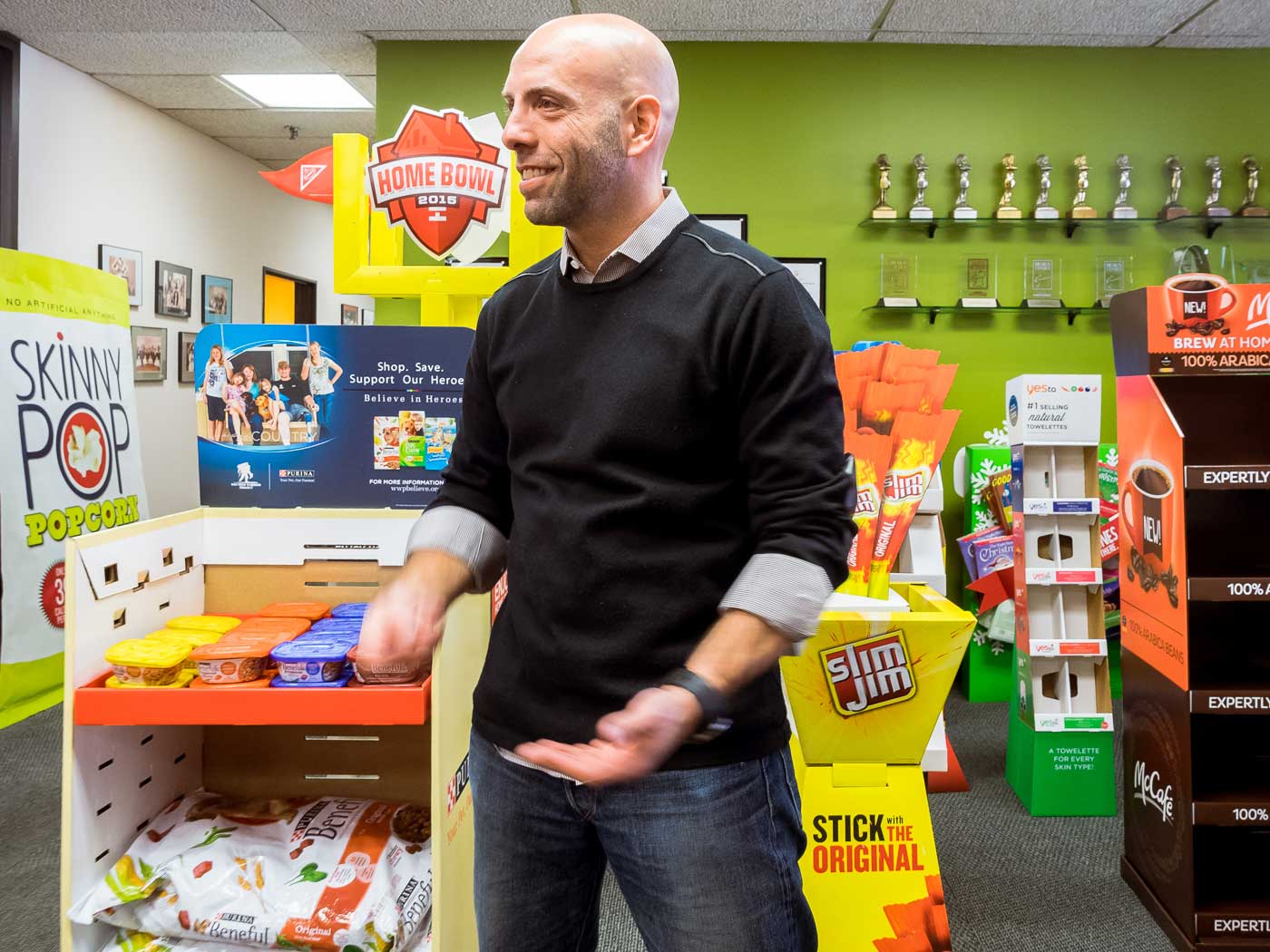
“Some of our designers always say, ‘Physics just allows for a finite amount of designs you can come up with,” Scott says. “What really limits it is customer budget and the footprint you’re allowed in store. …That’s part of the creativity. How do we make it look this cool, pop this great, have the wow factor?”
Inside the Box
In the Eisens’ industry, “corrugated” is a noun, a product made from three layers of paper: an inside liner, a fluted “medium” and an outside liner. Ideal didn’t get into corrugated until it acquired a corrugated-box manufacturer in the 1950s. Before that, the company made wooden boxes, initially from scrap lumber. These were the crates that Al Capone used to deliver liquor to speakeasies in the 1920s. During World War II, Ideal made wooden boxes for the U.S. military that were filled with supplies and dropped into shallow water for soldiers to retrieve.
Harry Eisen, Scott and Yale’s grandfather, dropped out of school after the eighth grade to work at the family business. Harry and his brother, Morris, took over Ideal after their father died in the 1930s and ran it together for three decades.
“My grandfather, to us, was always a sweet, kind man,” Scott says of Harry, who died in 2001. “As we got (to Ideal), we learned he was a very astute businessman, a tough businessman—the kind of businessman who had to do business the way we don’t have to. They had a lot of debt. They paid the bills when they could pay the bills.”
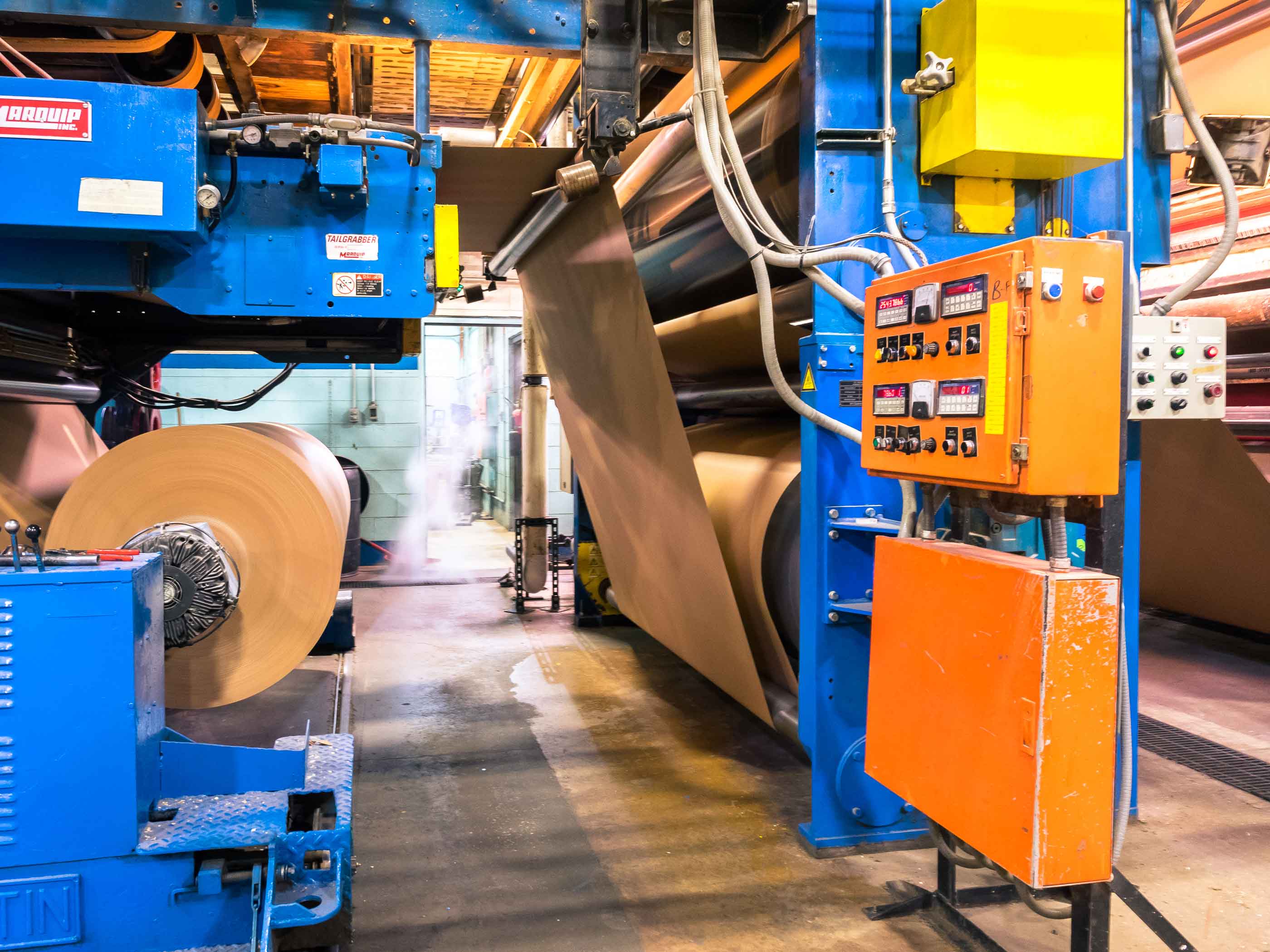
In the 1960s, Harry Eisen bought out his brother’s share in Ideal and asked Scott and Yale’s father, Stephen, to join the company. As Scott tells the story, his father was in law school at the University of Chicago at the time and reluctant to leave that career path. The factory loomed large in the brothers’ upbringing: Their father let them drive golf carts around the plant and pushed them down a 100-yard conveyor belt on a corrugated sheet —but they were always told, “You don’t have to come into the business,” Scott recalls.
So they didn’t. The brothers went to law school and found jobs as attorneys. Scott worked at an online advertising company in Chicago, while Yale took a job in the general counsel’s office at Sears and later joined his brother at the tech firm.
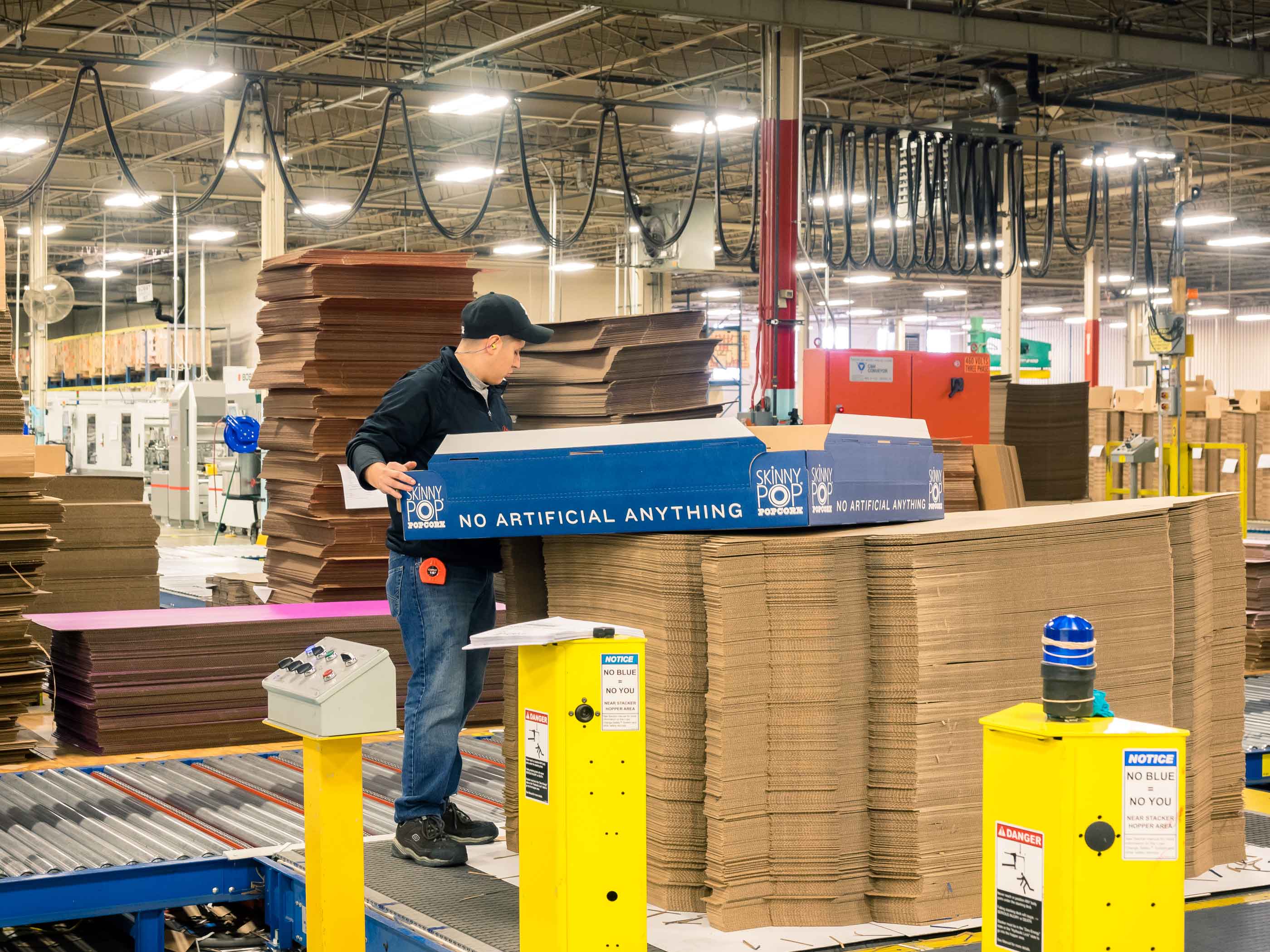
It wasn’t until 2000 that Stephen broached the subject of his son Scott taking over at the family business. Scott liked his job, but Ideal had begun transitioning to retail displays as a way to diversify beyond boxes. Stephen had hired an executive who formerly ran his own display company, and Ideal was adapting its processes to print high-quality graphics on corrugated. At the time, the company was still making displays according to specifications it got from an outside firm. Under Scott and Yale’s watch, Ideal would develop an in-house creative team to come up with ideas for displays and pitch them to consumer packaged-goods makers—taking control of the process from conception to when a finished display rolled off the conveyor belt.
Leaving the dot-com world for this opportunity at Ideal made business sense to Scott. The emotional leap proved tougher.
“It was very much a decision of, ‘OK, once I do this, this is the rest of my life,” says Scott, who was 31 years old at the time. “I’ve been sort of playing until now, and this is it. … Forget getting married, having babies—this was adulthood. I am now my dad. I am here. So emotionally, it was a big, big threshold to cross.”
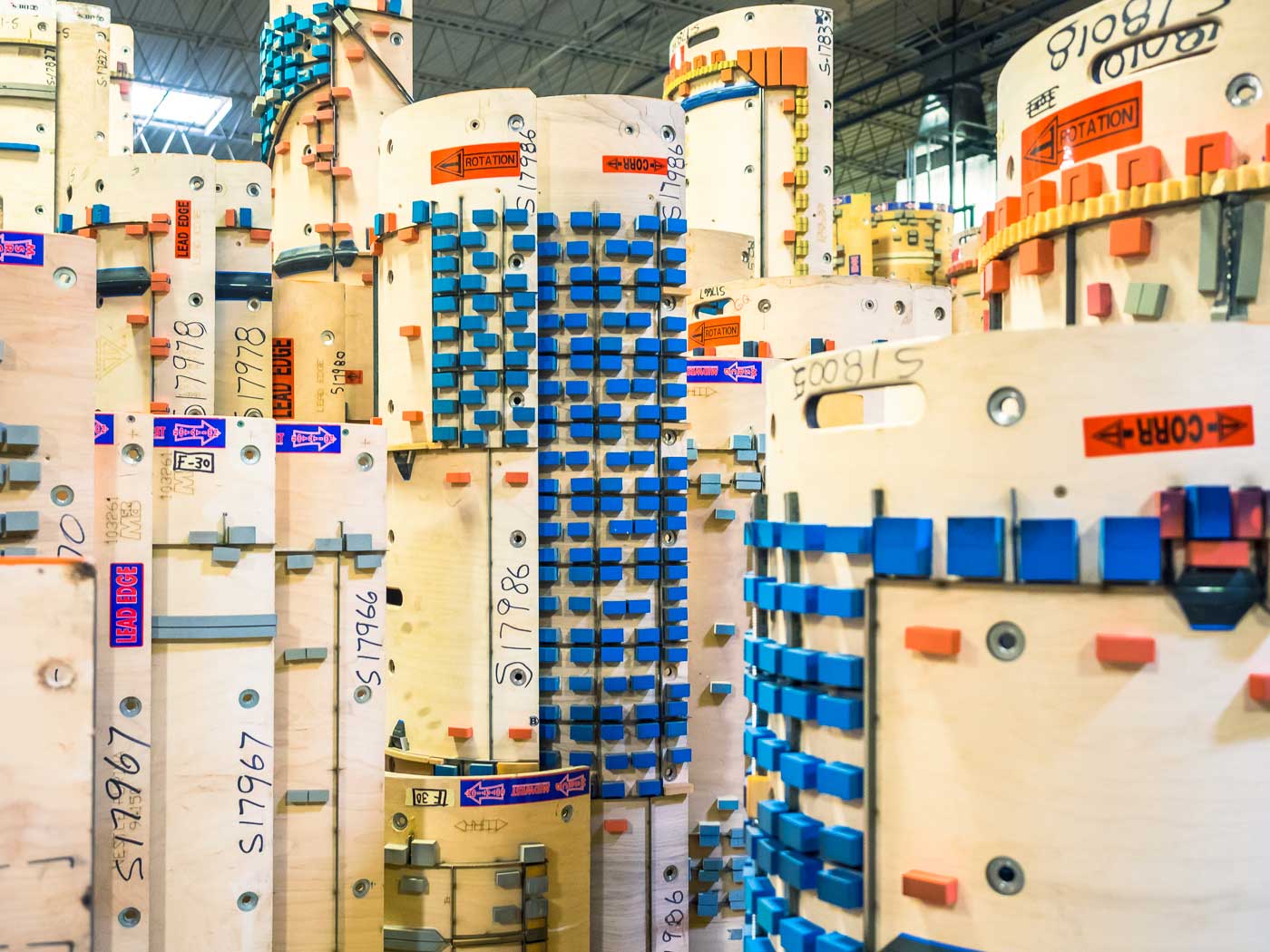
A few years later, Scott persuaded Yale to join him at Ideal. Scott is president and Yale is chief operating officer, while their father remains chairman. Each brother seems to represent a hemisphere of Ideal’s brain: Scott is the right side, tackling outward-facing functions like sales and marketing; Yale, who’s more reserved and makes straight-faced jokes about things like equipment depreciation, is the left brain, handling internal operations and administration.
If it fails in store, if it starts bending, if it collapses, it doesn’t matter what it looks like.
“At times, my area seems drier—even to me,” Yale says. “I have a certain amount of, I guess, attention and diligence and patience and other skills that I think allow me to work in this area.”
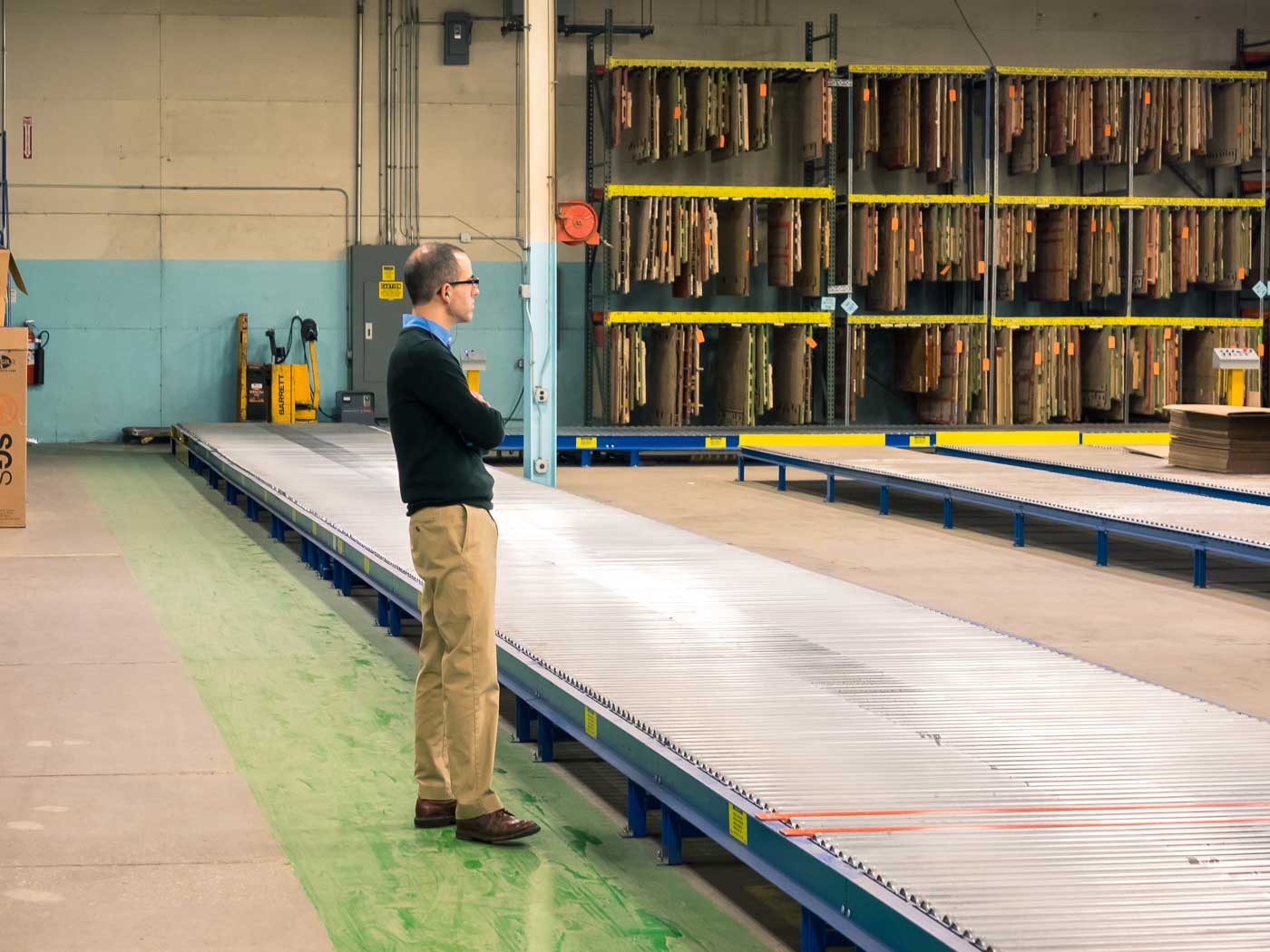
Both brothers agree that Yale’s side of the business is what keeps Ideal ticking. If the company promises a major brand that it can make an elaborate retail display for an upcoming holiday, it has to create an eye-catching design; engineer the corrugated structure to support merchandise without collapsing; and deliver everything on time. If the display will be shipped flat to the retailer and constructed by an employee, it has to be simple enough that an overworked clerk can assemble it efficiently.
“It has to hold product,” Scott says. “If it fails in store, if it starts bending, if it collapses, it doesn’t matter what it looks like.”
Basics and Beyond
Any display, no matter how fancy, begins its life as brown paper on a roll that weighs two-and-a-half tons and is made partially from scrap collected at factories like Ideal’s. There’s a virtual forest of roll stock in the company’s warehouse, stacked four high in the cavernous space. A corrugator crimps the paper into its familiar fluted shape, forming the medium, and uses heat, glue and starch to fuse the three layers. From there, the sheets are die-cut using large cylindrical or flat cookie cutters, making shapes as complex as a full-size human figure or an enlarged can of spray cheese.
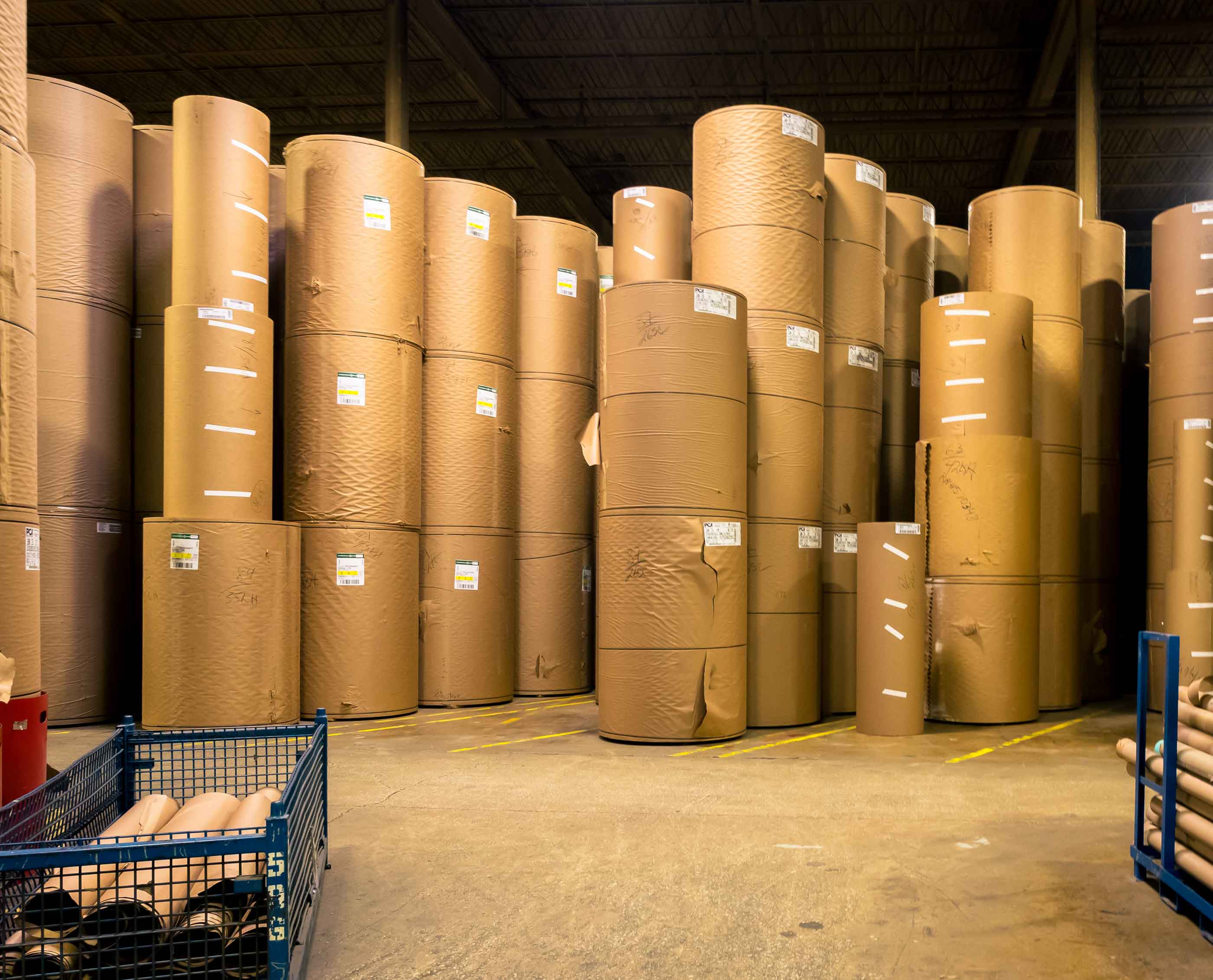
“We’re not just a box plant,” Scott says. “Boxes are made without tooling. …All boxes are, no matter the size, scores and panels and slots. But for specialty stuff, it takes tools. It takes cutting dies, rotary cutting dies, flatbed cutting dies, printing plates—and so one of our biggest challenges as a manufacturer is storage for all these.”
Ideal has invested in equipment that makes corrugated products more sophisticated than plain brown boxes. The plant has a laminator that turns a different kind of paper—akin to a heavy magazine cover—into the third layer of a finished piece of corrugated, eliminating an old process for sticking labels on a box. Another machine puts a blanket of ink on paper before it gets corrugated. The new equipment shortens manufacturing times and allows for higher-quality graphics and colors—crucial considerations in producing detailed displays. Ideal’s in-house ink chemists are constantly tweaking colors to make sure they match customers’ logos.
“It’s not good enough to be this kind of red; it’s gotta be Orville Redenbacher red,” Scott says. “So instead of fighting it and saying corrugated can’t do that, we embraced it and made ourselves a different kind of display company.”
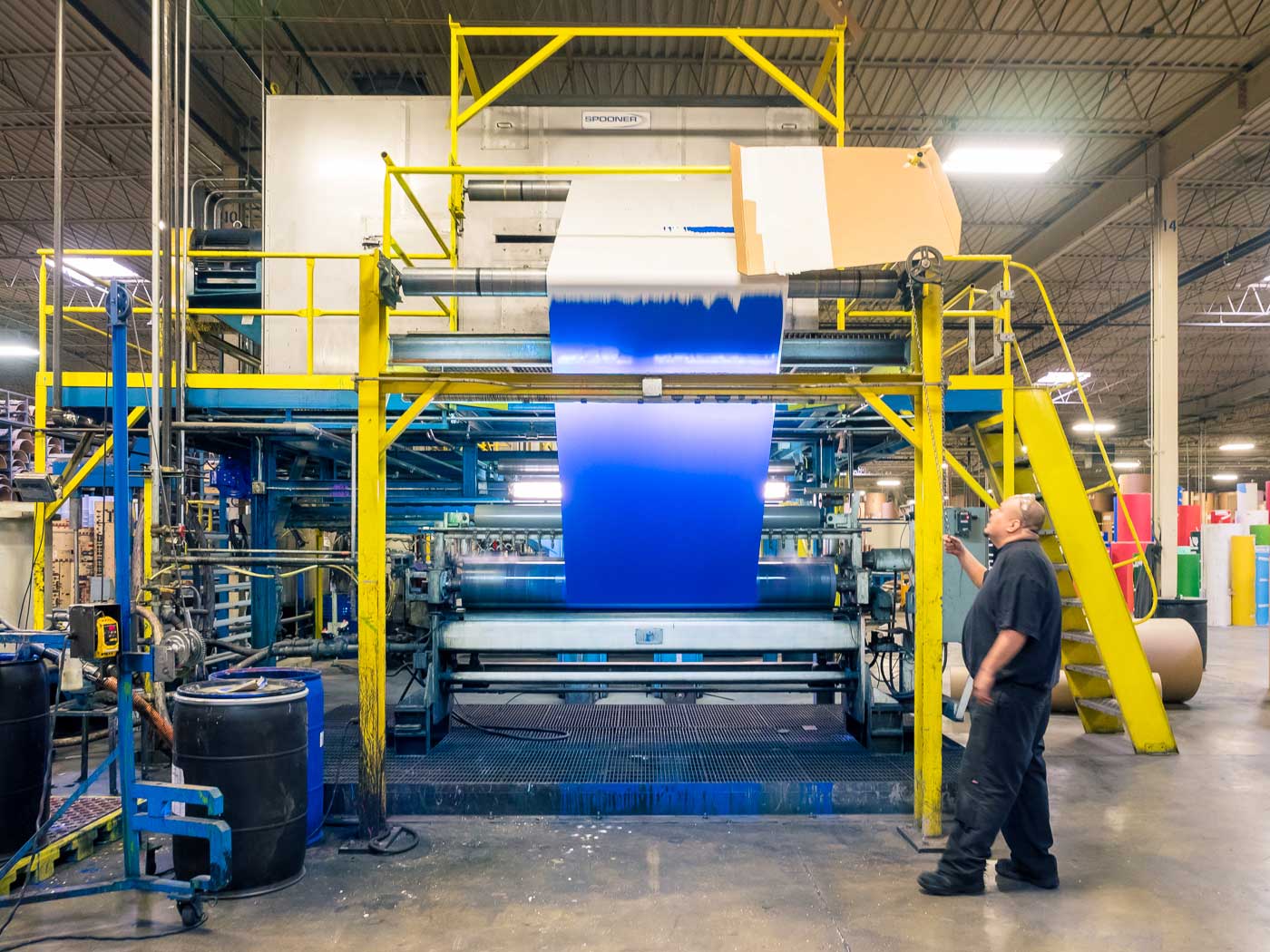
Part of Ideal’s transformation was aesthetic, since the Eisens felt their office space needed an ethos like that of a tech startup, ad agency or design firm. But it was also important to incorporate reminders of the company’s roots throughout the building. The legs of the glass-topped table in the creative team’s conference area are made from old rotary cutting dies, and the metal rods on the stair railing come from a machine found on the factory floor. “We’re never trying to deny that we’re in corrugated,” Eisen says. “That’s our lifeblood. It’s been my family’s lifeblood for 90 years. We love it. …We definitely like little reminders that no matter what we do in the front office, at the heart of it, we’re a manufacturer.”

